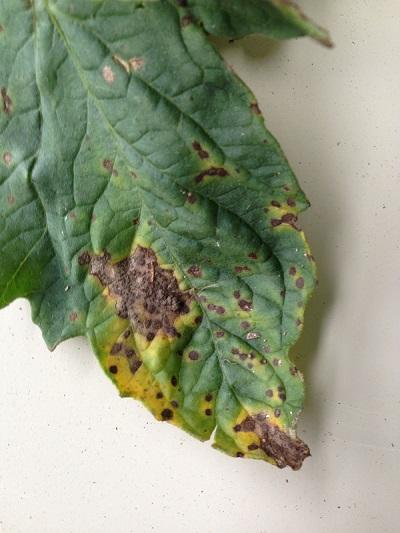Leaf spots on tomato leaves
Septoria leaf spot starts on lower leaves as small, circular gray lesions (spots) with dark borders. Fungal lesions enlarge, coalesce, and cause leaves to yellow and die. Lesions usually appear when the first fruit begins to form. Tiny black pycnidia (fungal fruiting bodies) can be seen in the lesions. Favored by wet weather.

Management
- Provide adequate spacing to increase air circulation and remove all suckers that emerge from the plant base
- Monitor transplants carefully for signs of this disease.
- Keep plants well mulched to minimize soil splashing.
- Water plants at their base. Avoid wetting the foliage.
- Prune off the lowest 3-4 leaf branches once plants are well established and starting to develop fruits.
- Remove infected leaves during the growing season and remove all infected plant parts at the end of the season.
- Apply a synthetic fungicide or an organic fungicide (fixed copper) according to label directions, early in the season, when symptoms appear to slow the spread of the disease. This may be helpful where the disease causes severe blighting each year leading to reduced yields.
- Diseased plant parts can be shredded and composted if "hot composting" techniques are used (pile temperatures should exceed 120° F throughout and piles should be turned two to three times).
